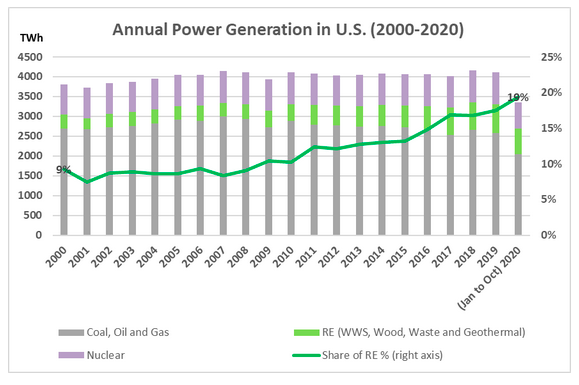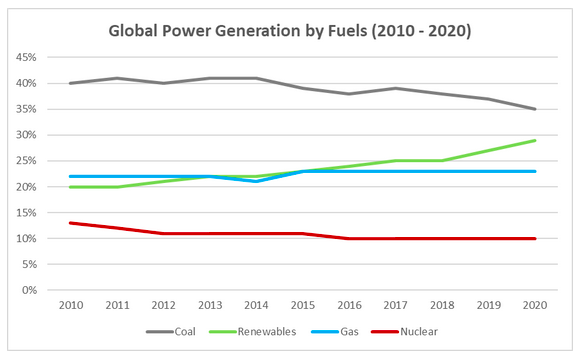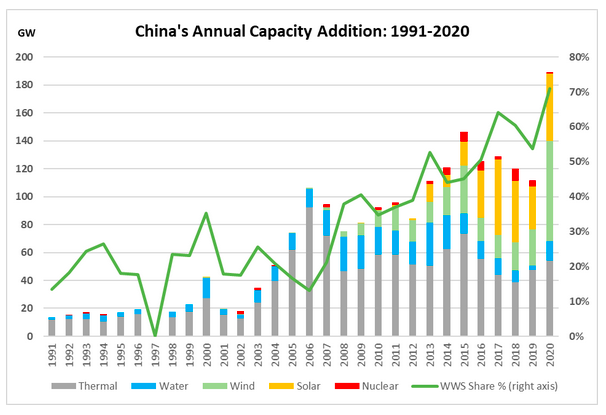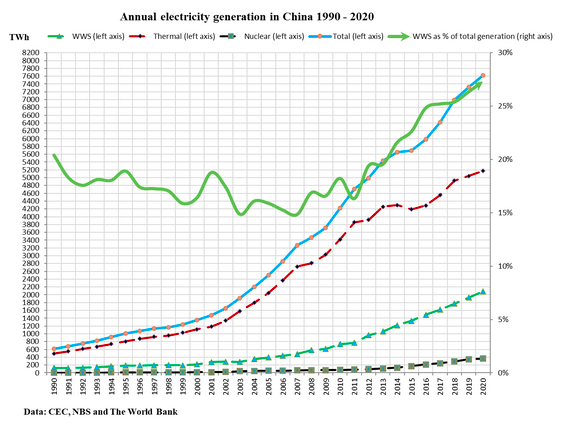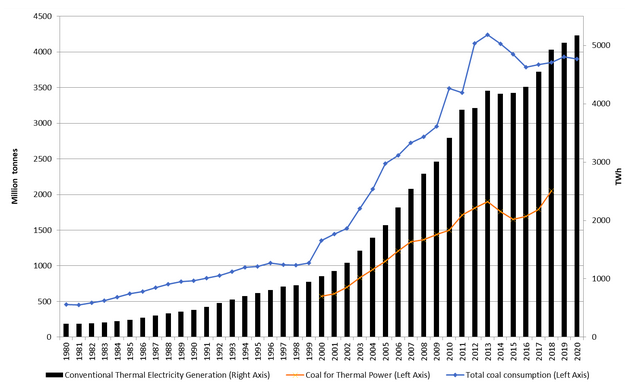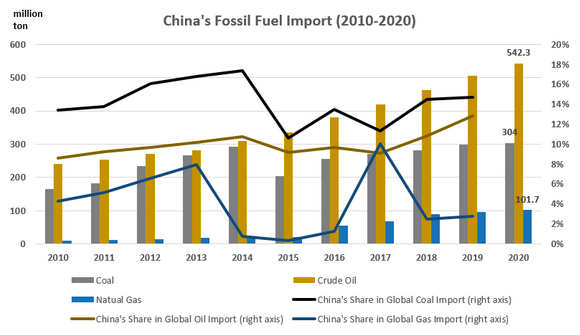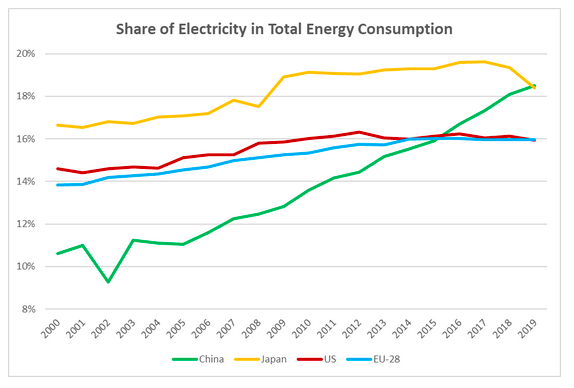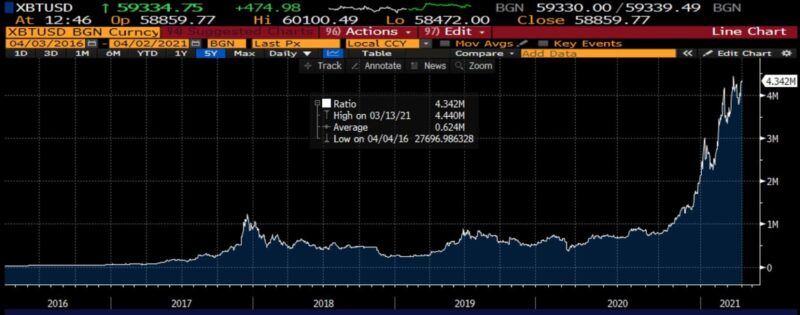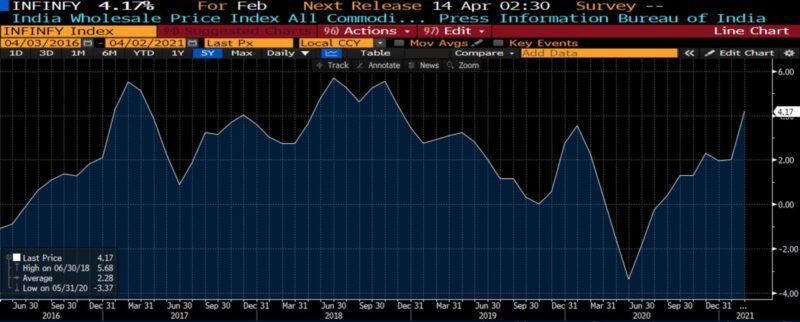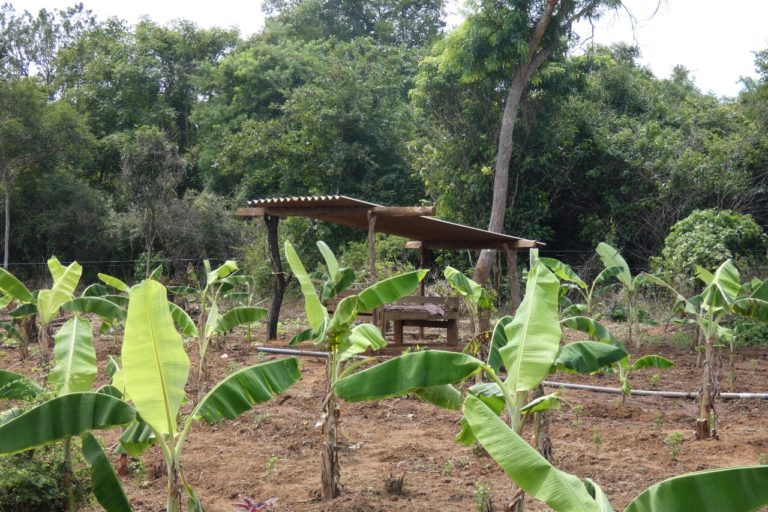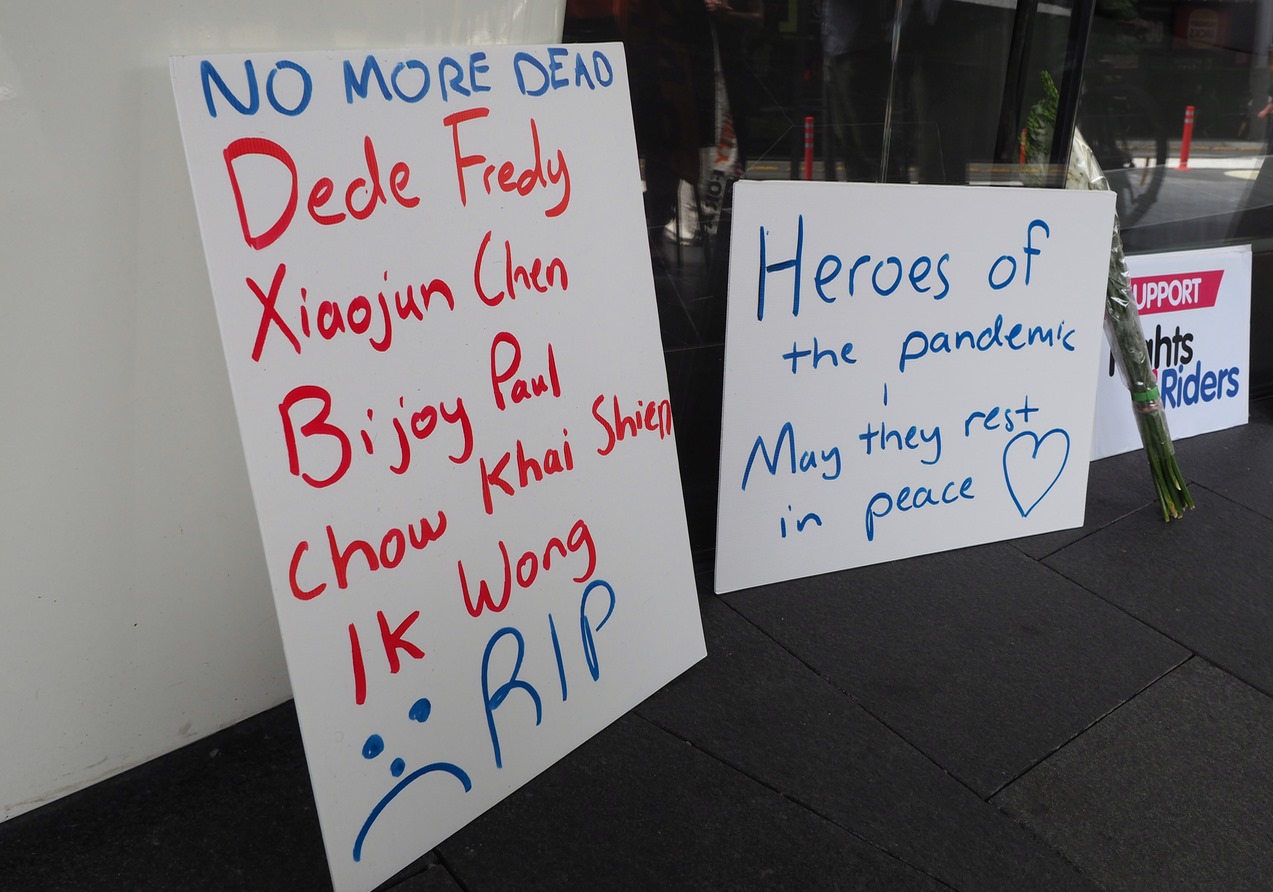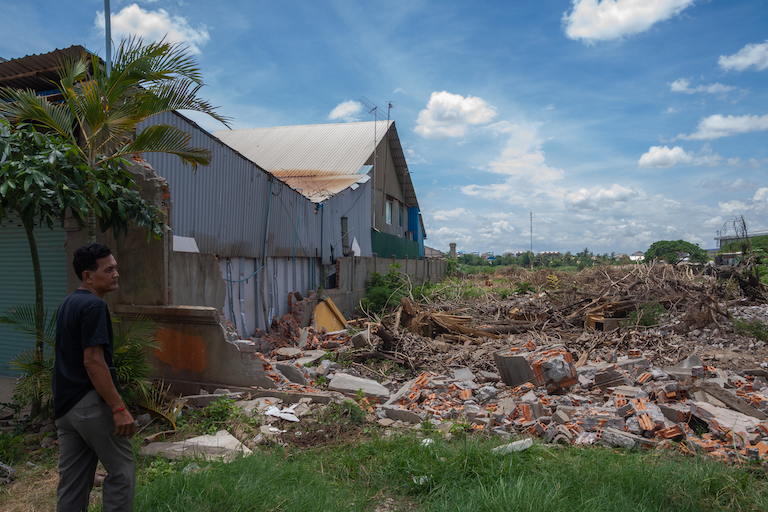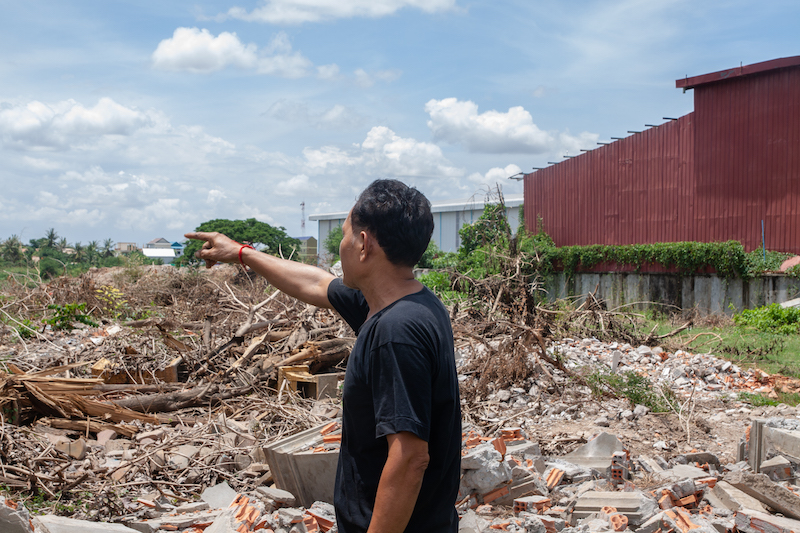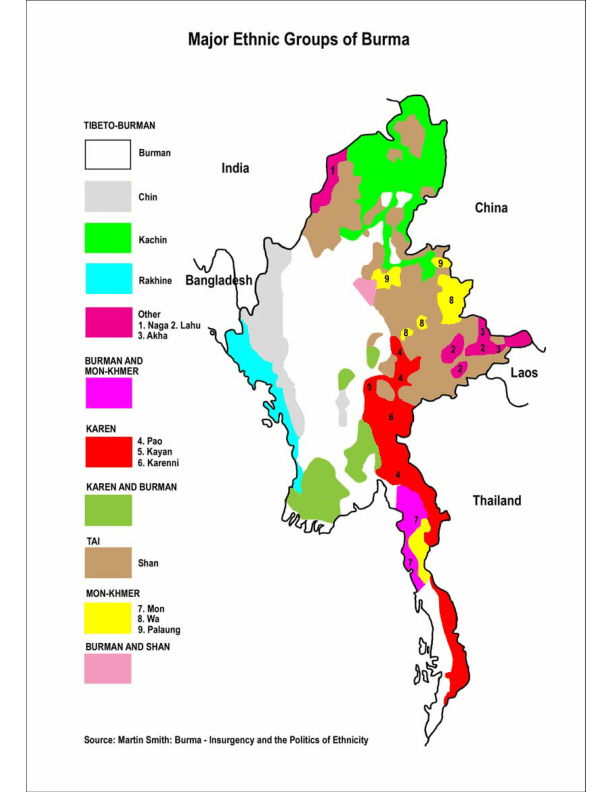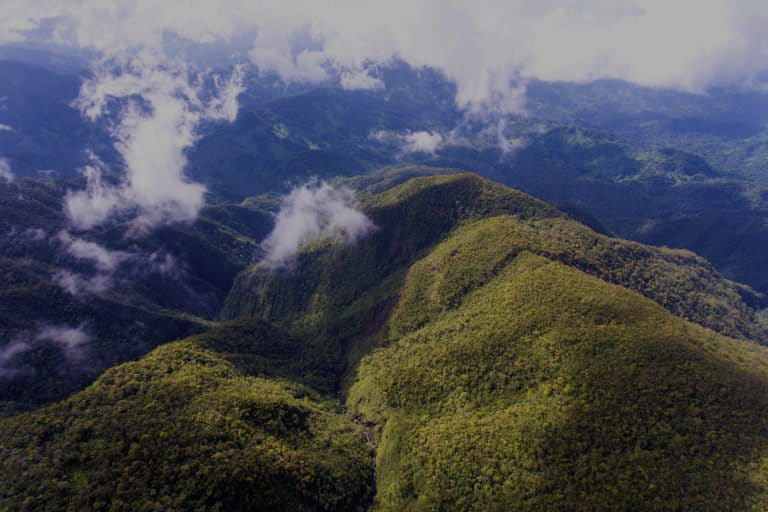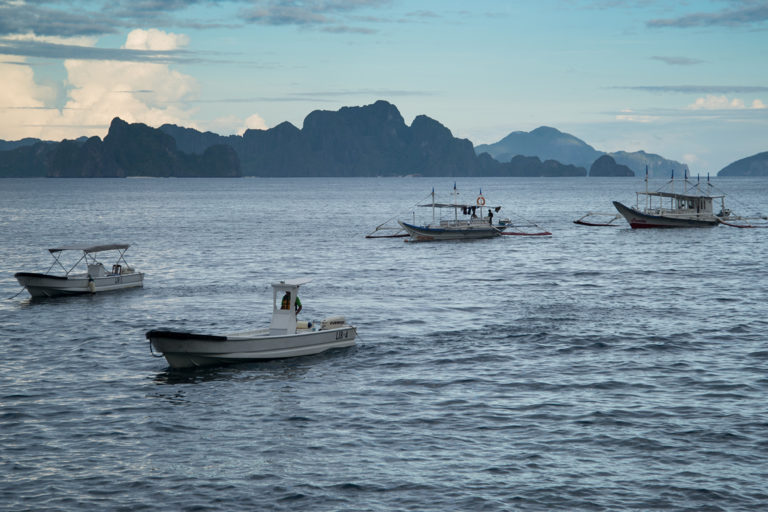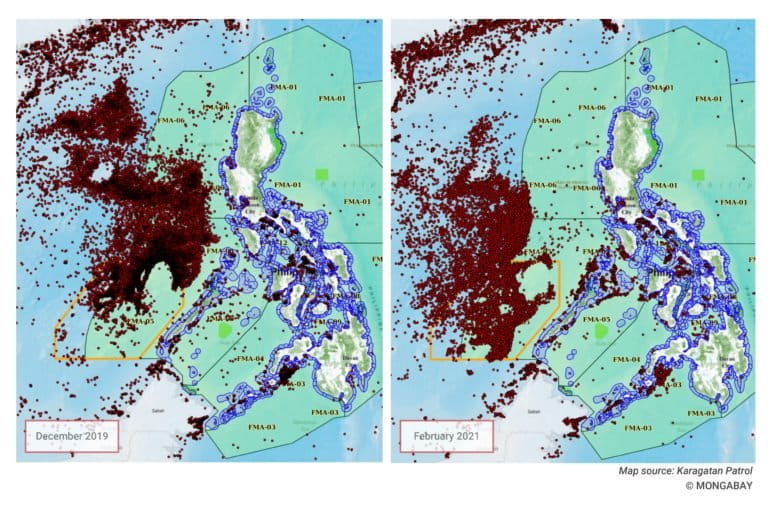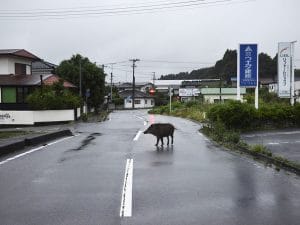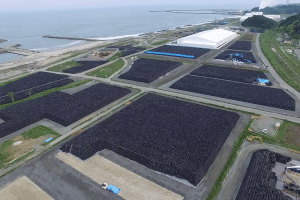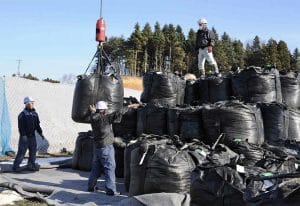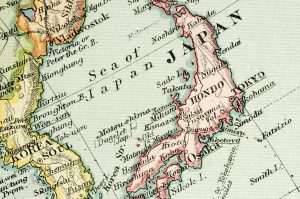All Global Research articles can be read in 27 languages by activating the “Translate Website” drop down menu on the top banner of our home page (Desktop version).
***
Abstract: This paper focuses on Meiji Japan’s annexation of the Ryukyus as seen through the eyes of key Western diplomats in the 1870s. Although it played out over seven years, the annexation process unfolded relatively smoothly on the international stage. One reason for this was the skill with which Japanese diplomats handled inquiries and potential protests by Western diplomats. In this article, I show that, as early as 1872, leading members of the Meiji government were gaining familiarity with the nuances of Western diplomatic maneuvering. Indeed, in some ways the annexation functioned as a rehearsal for future diplomatic challenges the regime would face. In retrospect, it offers an excellent lens through which to view Japanese diplomacy of the 1870s.1
*
Following the restoration of imperial power, Meiji Japan embraced modernization and, as part of this process, it sought to determine its national borders in order to create a modern nation-state. In the north, in 1869, the Meiji leaders incorporated the former foreign territory known as “Ezo,” renaming it Hokkaido; in 1875, they exchanged the island of Sakhalin with Russia in return for the acquisition of the Kuril Islands; in the south, in 1876, they annexed the Bonin Islands through a formal declaration; and in the same year, they imposed an “unequal treaty” on Korea, employing the same kind of gunboat diplomacy that Commodore Matthew Perry had used against Japan in 1853-54. Finally, in 1879, Japan formally annexed the former kingdom of the Ryukyus.

As previous scholarship has shown, by the early 1870s Japanese diplomats had recognized the interconnected nature of Japan’s unresolved border issues and the need to devise a comprehensive policy towards them.2Although I fully acknowledge the importance of understanding Meiji Japan’s national border issues as a single question, in this paper I confine myself to addressing the Ryukyuan annexation to Japan.
Dissatisfied with the Ryukyus’ ambivalent status – China and Japan both laid claims to the territory – in the new era of international relations, between 1872 and 1879 Tokyo’s leaders resorted to political and diplomatic maneuvers that aimed to formally incorporate the Ryukyu Kingdom into the newly established Meiji state. They ordered the Ryukyus to dispatch an embassy to Tokyo, where they appointed the ruling monarch as “King of the Ryūkyū Domain”; sent a punitive mission to Taiwan to avenge the deaths of a group of Ryukyuan fishermen considered to be “Japanese subjects”; concluded, through British mediation, an international agreement with the Qing court that (implicitly) stated that the Ryukyuan people were Japanese; ordered the kingdom to cease tributary relations with China; and, finally, in the face of strong resistance from the Ryukyuan authorities, annexed the kingdom by force.
Historians have conventionally referred to this process, which culminated in the establishment of Okinawa prefecture in 1879, as the Ryūkyū shobun (“the disposition of Ryukyu,” 1872-1879; hereafter “annexation”).3 Gregory Smits has pointed out that during the 1880s, “the shobun became an international event, involving diplomatic activity between and among China, Japan, Britain, the United States, France, and, of course, former officials of the Ryūkyūan court.”4
As Smits’ analysis suggests, the Ryukyu islands presented the new Meiji State with a diplomatic conundrum, one that involved not only relations with China, but also its relationship with several Western countries, especially those which had negotiated treaties with the Ryukyus (“Lew Chew”) in the 1850s. In other words, the Meiji leaders needed, at the very least, the powers’ tacit approval of their future plans for the islands.5
This paper focusses on the annexation as seen through the eyes of a number of key Western diplomats during the 1870s. Had these diplomats chosen to make a serious issue of Japan’s annexation of the Ryukyus, the matter could easily have become more complex and international tensions escalated. Although it played out over seven years, the annexation unfolded relatively smoothly on the international stage. One reason for this was the skill with which Japanese diplomats handled questions and potential protests by Western diplomats. As we will see, a number of their inquiries were directed specifically at the Ryukyuan treaties.6
As early as 1872, leading members of the Meiji government were becoming increasingly adept at interpreting the nuances of Western diplomatic maneuvering.7 Indeed, the annexation of the Ryukyus can be seen as an early example of the future diplomatic challenges the regime would face. In retrospect, the annexation provides an excellent lens through which to view Japanese diplomacy of the 1870s.
The Ryukyuan treaties
In 1609, the Ryukyu Kingdom was defeated by the Satsuma Domain and surrendered unconditionally; as a result, it was placed under the de facto rule of Satsuma (and by extension, of the Tokugawa bakufu).8 However, the Ryukyus continued to maintain the posture of an independent country, with Satsuma’s approval and financial support, in order to maintain tributary relations with China.9 In this way, while Satsuma gave the kingdom a high degree of autonomy in its internal affairs, it exercised considerable control over the kingdom’s foreign relations and created what Smits has called a “theatrical state” in its relations with China.10
After centuries under this arrangement, Westerners arrived in East Asia, visiting both the Ryukyus and Japan. Subsequently, the United States, France, and Holland concluded treaties of amity with the Ryukyu Kingdom in 1854, 1855, and 1859, respectively. In so doing, these Western nations recognized that the kingdom possessed at least some degree of diplomatic capacity, as the Ryukyuan authorities had signed these various agreements without the direct involvement of Satsuma officials. Ryukyuan officials drafted the treaties they exchanged with their Western counterparts in classical Chinese and dated them according to the Chinese calendar, omitting any reference to the kingdom’s subordination to Japan.
The Ryukyuan officials who negotiated with these Western powers were exercising the same kind of “theatrical diplomacy” that the Ryukyus had employed for centuries with China. While they repeatedly emphasized the kingdom’s status as a tributary of China, they never revealed their subordinate relationship with Satsuma and the bakufu.11 Although the powers’ arrival was perceived as a threat to the kingdom’s stability, and the Ryukyuan negotiators took great pains to prevent the signing of these agreements, in the end, they succumbed to the Westerners’ demands.
In the 1850s, Western observers were further prevented from fully understanding the Ryukyus’ status by the bakufu’s ambiguous replies when they asked about its relations with the kingdom. When, in early 1854, Commodore Perry demanded that bakufu officials open the port of Naha, the Japanese negotiators replied that “the Ryukyu islands are very distant and the opening of its ports cannot be discussed by us.” It was following this reply that Perry decided to sign a treaty with the Ryukyus without the bakufu’s involvement.12
On the other hand, the bakufu did not raise any objection to the compacts the Ryukyus signed with the US and France, and when in 1857 the Dutch asked the shogunate to mediate a treaty between Holland and the Ryukyus, the shogunate replied that even though the Ryukyu Kingdom shitagafu (obeys or submits) to Japan, moto yori gaikoku no koto nite (“it has been a foreign kingdom from the beginning”), and thus it would be problematic for Japan’s rulers to give instructions about such a treaty.13 From the bakufu’s perspective, the Ryukyus were subordinate to Japan, but not part of Japan; thus, they thought it prudent not to intervene in the Ryukyuan–Dutch Treaty. Although, at that time, the bakufu did not fully grasp that an international treaty was an agreement signed by two sovereign states and all the ramifications that flowed from that, it still tacitly approved the instruments signed by the Ryukyu Kingdom in the 1850s.
The Ryukyuan–American Treaty concluded on July 11, 1854, stipulated that American citizens in the Ryukyus should be treated with courtesy and friendship; Americans were granted the right of free trade and the ability to move freely on the islands without restriction, as well as the right of extraterritoriality (but not of consular residence); and that US ships in difficulty should be assisted and treated with courtesy by the Ryukyuan authorities. In the French treaty, in addition to these privileges, the Most Favored Nation clause was also included, along with rights to rent houses, land, and boats. The Dutch treaty was similar to the American treaty, but like the French instrument it also included the Most Favored Nation clause.
In the original documents, these agreements were referred to variously as “treaties,” “compacts” and “conventions.” As the treaties lacked ratification clauses, the rights and relations defined in them were valid and effective immediately following the exchange of the documents between the parties involved.14 However, while the US government ratified its treaty with the kingdom in 1855 (a purely domestic act to formally sanction the agreement), the French and Dutch government decided not to ratify their respective treaties with the Ryukyus in the late 1860s.

Last page of the 1854 Ryukyu-US Treaty
Courtesy of the Diplomatic Archives of the Ministry of Foreign Affairs of Japan (外務省・外交史料館蔵)
As early as 1862, the bakufu had revised its former policy and begun to characterize the Ryukyus as subordinate to both China and Japan, while also strongly affirming Satsuma control over the kingdom as a means of controlling the Western powers’ advances. In this way, the new policy provided the powers with more detailed – but still far from unambiguous – information about the Ryukyus and their relations with China, Satsuma, and the bakufu. Therefore, although in the 1860s the bakufu had no intention of incorporating the kingdom, it had in effect created a diplomatic environment that would prove advantageous to Meiji Japan when it eventually decided to annex the kingdom.15

Based on the foregoing analysis, it is reasonable to dismiss the Ryukyuan treaties as irrelevant and problematic in terms of Japan’s international relations. However, because they remained in place, any encroachment on the islands would potentially involve the Ryukyus’ treaty partners. In the sections that follow, I demonstrate that the discussions between the Japanese Foreign Minister, Soejima Taneomi, and the Western ministers based in Tokyo over Japan’s “alleged” annexation of the kingdom in late 1872 illustrate the intentions – and involvement – of all parties in ways that are not immediately apparent. By examining these negotiations and their outcomes in detail, I tease out Japan’s skillful responses to the powers’ demands in determining the status of the Ryukyus.16
The debate over the political status of the Ryukyus within the Meiji government
Japan’s encounter with the Western imperialist powers generated constant anxiety about the nation’s security. The Meiji leaders fully understood that the “unequal treaties,” which had been signed by the Tokugawa bakufu in the 1850s, had placed Japan in a subordinate position with respect to the Western powers and, because of this, their revision was to be given top priority.D While the main object of the Iwakura Mission of 1871-73 was the revision of the treaties, the Meiji officials who visited the US and Europe clearly understood from the inflexible attitudes of their Western counterparts that it would require a long process of radical reform to achieve their goal. The other pressing issue, as I noted at the outset, was the need for Meiji Japan to establish well-defined national borders.
Although the Meiji government had provisionally assigned control of the Ryukyus to the newly established Kagoshima prefecture (1871), in the spring of 1872, when the Iwakura Mission was abroad, Meiji leaders began to discuss the Ryukyu Kingdom’s political status in earnest. From their discussions, three main proposals emerged.
First, the deputy minister of the Ministry of Finance, Inoue Kaoru, proposed that Japan abolish the dual subordination system and, in order to enhance the prestige of the Meiji Emperor, bring the Ryukyu Kingdom under exclusive Japanese rule.18
Japan’s Foreign Minister, Soejima Taneomi, who also sought to bring the Ryukyus under Japan’s exclusive rule, proposed that, as a first step, the Ryukyuan king, Shō Tai, should receive his investiture from the Meiji emperor. Soejima also suggested appointing Shō Tai as king of a newly established Ryūkyū Domain and terminating all “private intercourse” (shikō) between the Ryukyu Kingdom and foreign countries.19
The third proposal came from the members of the sain, or Ministry of the Left, who submitted a detailed, nine-point plan that argued that Japan should maintain the status quo by declaring publicly that the Ryukyu Kingdom was subordinate to both China and Japan.20
In the event, the Meiji leaders adopted Soejima’s proposal and the Ryukyu Kingdom was required to dispatch an embassy to Tokyo.
At around the same time (early summer 1872), news of what became known as the Taiwan Incident reached the Meiji government. In 1871, a group of fishermen from the Ryukyus’ Miyako Island were shipwrecked on an isolated part of the Taiwanese coast; 54 of the 69 survivors were killed by indigenous people known as the Botan. For Japan’s leaders, the incident underlined the need to resolve the Ryukyus’ ambiguous political status and incorporate the kingdom into the new Meiji state.21
On October 16, 1872, when the Ryukyuan embassy arrived in Tokyo, the Meiji emperor formally appointed the king of the Ryukyus, Shō Tai, as king of the Ryūkyū Domain – a move that seemed intended to replicate the Chinese emperor’s investiture of the Ryukyuan royal line. Despite this installation having no precedent in relations between Japan and the Ryukyus, the Meiji leaders used it to establish a clear hierarchical relationship between the Japanese emperor and the Ryukyuan king.22 This was the first political measure taken by the Meiji leaders to bring the Ryukyu Kingdom into a closer relationship with their central government administration. It is important to keep in mind, however, that at the time these events were taking place, king Shō Tai was in Okinawa and was unaware that the Meiji government had conferred this new title on him through his ambassadors (the significance of this is made clear below).
For some Japanese officials, the emperor’s investiture of the Ryukyuan king meant that the kingdom’s international treaties were now null and void. For example, on the same day that Shō Tai was appointed king of the Ryūkyū Domain, Kabayama Sukenori, a major general in the Imperial Japanese Army hailing from the former domain of Satsuma, recorded in his diary that Shō Tai’s new role meant that the Ryukyus’ treaties with the Western powers had been effectively rescinded.23 Thus, just as the Tokugawa bakufu had not regarded the Ryukyus’ foreign treaties as an impediment to its control of the kingdom, Kabayama did not foresee further involvement of the Western powers in Ryukyuan matters now that, as he thought, the treaties had been abolished.
Shortly after the investiture, on October 30, 1872, the Meiji government replaced the resident magistrate appointed by Satsuma with a branch office of the Foreign Ministry to oversee the Ryukyus’ diplomatic relations with the powers.
Aware of the diplomatic sensitivities involved, the Meiji leaders decided against informing the Qing of Shō Tai’s new appointment, allowing the Ryukyus to continue tributary relations with China. However, during the Ryukyuan embassy’s stay in Tokyo, the Meiji government informed the American and French representatives, albeit informally, that Japan would henceforth assume responsibility for the Ryukyus – a clear indication of Japan’s new stance toward the kingdom.
De Long’s request to the Meiji government
In the pre-telegraph age – as was the case in East Asia in the 1870s – the actions and decisions of diplomats stationed abroad often had an immense influence on the diplomacy of their governments. As we will see, it was a time when the exchange of notes between diplomats could change the status of territory regardless of the reality on the ground.
When Foreign Minister Soejima Taneomi revealed his plans for the Ryukyus to the American minister in Tokyo, Charles E. De Long, the status of the treaty that the kingdom had signed with the US in 1854 emerged as a question of major importance.24 After Soejima privately informed De Long of Japan’s annexation of the Ryukyus (as a result of Shō Tai’s appointment as king of the Ryūkyū Domain), on October 20, 1872, the American minister wrote to Soejima seeking clarification of the status of the 1854 agreement:
Understanding you advised me a few days since that the King of the Lew Chew Islands had been called upon by the Japanese Government to resign his titles and estates to it, which had been done, letters patent of nobility issued to him constituting him a member of the nobility of your Empire ranking [him] as to the former daimios, thus incorporating Lew Chew as an integral portion of the Japanese Empire; I feel called upon to call your attention to a Compact entered into between the former Kingdom of Lew Chew and the United States of America, on the 11th of July 1854 … and to ask if the same will be observed in all its provisions by Your Government within the territorial limits of the former Kingdom.25
It is clear from this letter that De Long understood (from Soejima’s words) that Shō Tai had resigned his “titles and estates” to the Meiji government and that the Ryukyus had been incorporated into Japan.26 This is an important point because, according to Japanese sources, at that time (1872) Meiji leaders had not yet made clear their intention “to annex” the Ryukyus.27 As soon as he learned of the kingdom’s new status, De Long sought assurances that the change of status would not negatively affect the US and its treaty.
De Long’s exchange with Soejima in 1872 has long been known to scholarship; previous studies have used it to demonstrate the close relationship between the two men.28 However, earlier studies have failed to consider why, of all the questions he might have put, De Long asked the Japanese government if it would take responsibility for the 1854 treaty.
De Long’s reasoning is clarified in a letter he sent to the US Secretary of State, Hamilton Fish, in which he explained Shō Tai’s new appointment and the consequent formal incorporation of the Ryukyus into Japan. De Long wrote that the king “had accepted” his new title and the kingdom’s incorporation. As we have seen, however, Shō Tai did not know what was happening in Tokyo at that time. Most likely De Long’s understanding was based on what Soejima had told him. Next, De Long noted that the Ryukyus–US Compact, which had been “proclaimed” by American President Franklin Pierce in 1855, “gave to our people certain privileges not embodied in our treaty with Japan” and that because of this he had requested, and obtained, an undertaking from the Japanese Foreign Minister to respect and observe its contents.29
Thus, De Long was unconcerned by the Ryukyus’ new status so long as Americans could continue to enjoy freedom of trade and movement in the islands – a right they did not have in Japan at that time.30
In his letter to Fish, De Long also noted that the Taiwan Incident gave the US an “opportunity” (with the assistance of the former American Consul in Amoi, General C. Le Gendre) to “put our legation at Peking and yourself [Fish] in such rapport with the views and intentions of this government [Japan] as to be of substantial benefit to us and at the same time advance my standing and intimacy with this government [Japan].”31 Because De Long was seeking to ingratiate himself with the Japanese government and be seen to cooperate with them, it seems he had no interest in verifying the accuracy of Soejima’s claims about the new status of the Ryukyus.
In response, Fish approved De Long’s request to take measures to ensure that the Japanese government would observe the Ryukyus–US Compact.32 Fish wrote that “it is supposed that the absorption or incorporation of one state by another does not discharge or release, within the limits of the absorbed or incorporated state, the obligation which it may be under to a third power at the time of such absorption or incorporation.”33 It is thus clear that in the Americans’ interpretation, Japan’s annexation of the Ryukyus was that it was a fait accompli – a precondition for future discussion with Japan as to whether it would respect the 1854 treaty.
Fish’s phrase, “it is supposed,” is of particular interest. In his view, following the incorporation of one state into another, the annexed state’s former obligations included in international treaties would not be rescinded. A thorough investigation of the position of international law on this question at that time would require a separate article. Here, however, it is sufficient to consider the point that precisely because De Long informed Fish that Japan had already assured him that it would uphold American privileges in the Ryukyus, Fish promptly approved this arrangement, which he “supposed” was in accordance with international law.34
The French government is informed of the Ryukyus’ annexation to Japan
The French Minister in Tokyo, Paul Louis de Turenne, also played an important role in events as they unfolded in late 1872.35 On October 16, 1872 (the same day Shō Tai was appointed king of the Ryūkyū Domain), Turenne wrote to his government informing it that some days previously, Soejima had told him of Japan’s intention to claim the Ryukyus, and that this decision was closely connected to the Taiwan Incident. Turenne informed Paris that he understood the reasoning behind Soejima’s plan, since the US and Prussia, which lacked bases in East Asia, might have an interest in the islands. Turenne had responded by telling Soejima that he hoped he would succeed in his intentions. Turenne also reported that he had asked Soejima whether he expected Chinese opposition to Japan’s plans for the Ryukyus, as Beijing had exercised its own rights over the archipelago for three centuries. According to Turenne, Soejima replied that he was planning to propose “a compromise” to the Ryukyuan ambassador: Japanese assistance and abolition of the traditional annual tribute to Satsuma in exchange for the ambassador’s commitment to reject Chinese “interference” in the kingdom’s affairs. Once this deal was accepted, and if the Ryukyuan “prince” (Soejima was likely referring to the king) was willing to renounce his “essential attributes of sovereignty” (aux attributs essentiels de la souveraineté), Soejima planned to have the kingdom redesignated as a han (domain) and to appoint the Ryukyuan king as a member of the Japanese court. Turenne argued that Soejima’s plan deserved serious consideration by the French government because, although he thought it unlikely that the two countries would go to war over the issue, it was likely to destabilize Japan–China relations once China learned of it.36
Turenne’s report to his government reveals that, before Shō Tai was appointed king of the Ryūkyū Domain on October 16, 1872, Soejima had already obtained Turenne’s tacit approval for Japan’s intention to annex the kingdom and transform it into a Japanese domain. Although Soejima told Turenne that he was planning to offer a compromise to the Ryukyuan ambassador, there is no evidence that any such offer was ever extended from the Meiji leaders to the Ryukyuan envoys.
A few days later, on October 29, Turenne again wrote to Paris with the news that Soejima had informed him that the Ryukyuan ambassador had accepted his offer of compromise and, as a result, “apart from the possibility of Chinese interference in this matter,” the territory’s incorporation into Japan “can be considered as accomplished.”37
Although France had earlier signed a treaty with the Ryukyus which was never ratified, Turenne did not refer to this in the letter. For him, the Ryukyu Kingdom was dependent on both China and Japan; he also saw it as the possible target of American and German imperialism, as well as a complicating factor in China–Japan relations. Like De Long, Turenne also accepted Soejima’s statements without verifying them (as we have seen, since there was no offer of compromise on the table, the ambassador could not have accepted what did not exist). Turenne did not seek clarification or verification when Soejima told him that the ambassador had accepted the offer without specifying whether the king had indeed renounced his “essential attributes of sovereignty.”
Thus, French diplomatic sources reveal that in late 1872 Soejima was already talking about the Ryukyus’ annexation to Japan to a senior French official.
At this point, some clarification is in order. Since France had decided not to ratify the treaty it had made with the Ryukyus, it is understandable that Turenne did not raise the treaty as an issue during his meetings with Soejima. As we have seen, rather than seeing the Ryukyus as an independent kingdom, Turenne maintained the view that the islands were subordinate to both China and Japan. However, it is important to appreciate that, based on the surviving sources, neither the Ryukyuan, Meiji, nor Qing governments ever made an issue of this lack of ratification. In 1862, a French mission had gone to the Ryukyus and ascertained that the treaty France had signed with the kingdom in 1855 was still being observed by the Ryukyuan authorities. Thus, from the Ryukyus’ perspective, the treaty with France remained in force. However, when in 1867 the French government (after consulting Holland about the status of its treaty with the Ryukyus) decided not to ratify the treaty, it did not notify the Ryukyu Kingdom of its decision to drop the Ryukyuan-French Treaty from its list of formal treaties.38
Thus, in the eyes of the Ryukyuan, Japanese, and Chinese governments, the Ryukyuan–French Treaty was a formal and binding agreement and, as a result, their respective heads of state considered France’s involvement in Ryukyuan affairs to be significant. In other words, far from being a mere bystander, the French government was another actor involved, at least indirectly, in the developing Ryukyuan story.
Soejima’s response to the Western diplomats’ inquiries
At this point, let us reconsider what we have examined so far from the Meiji government’s perspective. As we have seen, neither De Long nor Turenne sought further clarification about Soejima’s assertions and informed their governments that the Ryukyuan king and his ambassador had accepted the Japanese government’s offers, including the kingdom’s incorporation into Japan.
Returning to the negotiations between De Long and Soejima – as De Long’s inquiry showed, the Americans had privileges in the Ryukyus and were unwilling to renounce their treaty rights. De Long asked that the treaty be honored in all its provisions and sine die (indefinitely). But, at the same time, by using the words “thus incorporating Lew Chew as an integral portion of the Japanese Empire,” he was effectively admitting that the Ryukyus had been annexed. Thus, De Long’s decision not to question the kingdom’s incorporation and to consult Japan alone on the future of the US–Ryukyu Compact was key to determining Soejima’s stance on the Ryukyuan-American Treaty. This had a doubly favorable outcome for Japan: It both offered Meiji leaders a prudent solution to the problem of the pre-existing treaty (by implicitly suggesting that Japan assume responsibility for it) and, more importantly, it assured the Japanese government that, so long as it upheld the treaty in all its provisions, the US would not obstruct Japanese encroachment on the Ryukyus.
Mindful of De Long’s interests, Soejima did not argue that the Ryukyus’ treaties were invalid (or had been rescinded, as some Japanese officials believed), as this would have certainly triggered American objections. As we have seen, in the 1870s Japan was politically subordinate to the Western powers and would not risk antagonizing the Americans on the Ryukyuan issue. The best option for Japan was to accede to the concessions demanded by De Long. On November 5, 1872, Soejima wrote to De Long: “The Lew Chew Islands have been dependencies of this empire for hundreds of years, and to them the title of Han [domain] was recently given.” Giving the Ryukyus the status of a domain was, according to Soejima, all that the Meiji government had done until that point. Then, using De Long’s own words, he went on: “As you [De Long] say, the Lew Chew being an integral portion of the Japanese Empire, it is natural that the provisions of a compact … will be observed by this government.”39
Soejima showed his diplomatic skills by using De Long’s own words to demonstrate that his American colleague had already acknowledged the kingdom’s annexation; this being the case, Soejima felt able to grant major concessions to the US government in return for its tacit approval of Japan’s annexation of the Ryukyus.
In assessing these bilateral discussions, it is important to appreciate that, initially, De Long had asked whether Japan would honor the Ryukyuan–American Treaty, an option that Meiji Japan might have rejected at this stage (Kabayama, for example, was talking about “abrogation” of the treaties, not “upholding” them). Consequently, Soejima accepted De Long’s suggestion that Japan take full responsibility for the treaty signed by the Ryukyu Kingdom with the US. In this way, the Meiji leaders deftly sidelined one of the strongest potential supporters of the kingdom’s autonomy, given that the American government alone had ratified its treaty with the Ryukyus.
Following De Long’s inquiry and Soejima’s response, the US and Japanese governments reached an important, albeit informal, consensus. On December 21, 1872, Mori Arinori, the representative of the Meiji government in Washington, D.C., wrote to Soejima informing the Japanese government that during a “private conversation” with Fish, the secretary of state had assured him that “so long as Japan upholds the [Ryukyuan–American] Treaty in all its provisions and does not make any changes to it, [the US government] will not raise any objections at all.”40
Thus, through an informal understanding between the two governments, the Meiji government obtained tacit approval from the US for the continuation of the Ryukyuan-American Treaty and, more importantly, of Japan’s annexation of the Ryukyus.
From that time, the Meiji government – which, as we have seen, gave little weight to France and Holland’s decision not to ratify their respective Ryukyuan treaties – handled the kingdom’s treaties with kid gloves, even to the extent of making no mention of these agreements during negotiations with France and Holland.41 In other words, Japan left both countries to make the first move in any discussion of the treaties, although the issue was never raised by either party. Japan only discussed the Ryukyuan treaties when other nations raised the matter first, as happened with the US.
In March 1873, with the clear intention of proving that Japan was in charge of Ryukyuan diplomacy, the Meiji government ordered the Ryukyus to hand over the original documents on which the three treaties were based. Although Ryukyuan officials firmly opposed the directive, the documents were seized in May 1874 and the Meiji leaders then returned to the Ryūkyū Domain a copy of the original documents. At that point, the Ryukyuan officials implored the Meiji leaders not to change the content of their treaties during negotiations with the powers.42
A number of other powers were also focusing their attention on the Ryukyuan treaties. On August 27, 1873, at the very time when the foreign ministers in Tokyo were pressing Japan to open up the interior of the country to foreigners, the Italian Acting Minister, Conte Balzarino Litta, and the German Minister, Maximilian A. S. Von Brandt, each sent very similar requests to Soejima. Having acknowledged that the Ryukyus were now an integral part of Japan (even though the islands would not be formally incorporated for six years), they asked the Meiji government to submit notes granting Italian and German vessels and citizens the same rights and privileges included in the former Ryukyuan treaties and extended to the US, France, and Holland. It is interesting to observe that both diplomats considered that, temporarily at least, the simple exchange of notes was sufficient for the granting of these concessions. The alternative, they noted, was for the Meiji government to sign a new treaty that would meet their requests, if that was its preferred option.43
Thus, while the Italian and German representatives sought major concessions (the upholding of the Ryukyuan treaties in all their provisions and indefinitely, even though neither Italy nor Germany had had formal relations with the Ryukyus), by offering to settle the issue through the exchange of notes they also made it clear that they had no intention to undermine the Japanese government; in fact, a simple exchange of letters would avoid invoking the MFN clause enjoyed by all of Japan’s treaty partners.
On September 19, 1873, Soejima replied that he would handle the matter as outlined in their proposal and would inform the Ryūkyū Domain of the new arrangements.44 In this way, in return for Italy and Germany’s tacit approval, the Meiji government granted them the same privileges enjoyed by the US, France, and Holland in the Ryukyus.
Once the Western powers (the US and France and, after 1873, Italy and Germany) had accepted that Japan had formal responsibility for the Ryukyus, Japan had only to convince the Chinese government and, to a lesser extent, the Ryukyuan authorities, who now found themselves stripped of their former (albeit “theatrical”) diplomatic status.
The Western diplomats in Japan were the representatives of imperialist states that were naturally focused on their own interests and privileges. Certainly, they did not feel any moral or other kind of obligation to advocate for Ryukyuan sovereignty or autonomy. Rather, they perceived the kingdom as a minor actor in the East Asian arena, having nothing of great value to offer their ambitions. However, the fact that a number of Western diplomats had accepted the Japanese annexation so swiftly was advantageous for the still politically weak Japan, whose attitude toward the imperialist powers veered between suspicion and admiration. At the same time, the diplomats’ acceptance of Japan’s actions put the Ryukyuan authorities into a difficult spot. They were unaware that the treaties had been superseded by Japan with Western blessing, and they wanted to maintain their former arrangements with China and Japan. In addition, the Chinese government knew nothing about the informal understanding reached by Soejima with a handful of Western diplomats. It was in this context that when in 1873 a group of Ryukyuan officials in Tokyo sought guarantees of their kingdom’s future from Soejima (who had just returned from China for the ratification of the 1871 Sino-Japanese Treaty), the Japanese foreign minister told them that the Ryukyuan polity and government would remain “unchanged through eternity” (kokutai seitai eikyū ai kawarazu).45
Significantly, Western documents reveal information about the annexation that is not found in Japanese sources. In private meetings, Soejima sought to justify the Japanese incorporation of the Ryukyus by assuring De Long and Turenne that the Ryukyuans – the Ryukyuan king and his ambassador – had accepted annexation, despite the fact that this was not the case. In other words, during the build-up to formal annexation, Soejima was careful to ensure that both the US and France (powers that had signed treaties with the Ryukyus) would not raise any objections to Japan’s plans.
Britain had its own intelligence sources on the matter. On October 22, 1872, the British Acting Minster in Tokyo, R. G. Watson, informed his government of the arrival of the Ryukyuan embassy in the Japanese capital, noting that the Meiji government “it seems has taken advantage of the visit of this mission to take Loochoo entirely under its protection, and to incorporate it with the Japanese Empire” as a “Han.”46 It seems that Watson did not receive this information directly from Soejima, as De Long and Turenne had done. Apparently, Soejima selected the diplomats to whom he disclosed Japan’s plans for the Ryukyus.47
The legacy of De Long’s inquiry and Soejima’s response
In May 1874 Meiji Japan invaded Taiwan to revenge the 1871 massacre of a group of shipwrecked Ryukyuan fishermen.48 Although, following protracted negotiations between China and Japan, the two countries signed an agreement on October 31, 1874, they failed to agree on the status of the Ryukyus.
A year later, in early 1875, what was to be the last Ryukyuan tributary embassy arrived in Beijing. The Taiwan Expedition and the arrival of this mission in China showed that the Ryukyus had not in fact been incorporated to Japan, as previously declared in the American and French dispatches.
At this point, the Japanese Acting Minister in Beijing, Tei Einei, informed his American colleague, Minister B. P. Avery, that the Meiji government had decided to assert “the complete jurisdiction of Japan over the islands.” On May 30, 1875, Avery informed the US Secretary of State, H. Fish, of these developments.49
On July 29, 1875, Fish wrote to John Bingham, who had replaced De Long in Tokyo two years earlier, reminding him that “A compact was concluded between the United states and the Royal Government of the Lewchew … granting certain privileges to American citizens and vessels going to the Lew Chew islands.” Fish was citing the very words used by De Long in 1872; now, he instructed Bingham to “examine the question, and in the event of any consolidation of those islands by Japan, see to it that our compact be preserved, unless it should be found more advantageous … to apply the treaty with Japan.”50
These exchanges show that, mindful of the 1872 developments, Fish focused on American privileges that must be “preserved” or even increased in the event that the treaty with Japan proved more advantageous to the Americans in the Ryukyus.
Following Fish’s instructions, on April 4, 1876 Bingham wrote to the Japanese Foreign Minister, Terashima Munenori: “I make these inquiries because it is the wish of my Government to know whether anything has been done in the premises which in anywise contravenes, limits, or changes the subsisting compact between my Government and that of the Lew Chew Islands.”51 Again we see a persistent concern that Japan preserve US treaty rights in the territory of the Ryukyu Kingdom.52
On May 31, 1876, Terashima (who had asked about, and consequently been informed by the Meiji government about Soejima’s 1872 response to De Long53) replied to Bingham, writing that “this government [Japan] has not at any time interfered with the rights of the United States as secured by its subsisting compact with the Lew Chew and before taking such action this Government will confer with the Government of the United States.”54
We can observe a nuanced shift in the Japanese strategy around the Ryukyuan–American Treaty. Whereas in 1872 Soejima had promised De Long to uphold the treaty in its entirety and indefinitely, in 1876, Terashima informed Bingham that Japan had been maintaining American privileges in the Ryukyus. Although, in the near future, Japan was planning to make some changes to the arrangement, he assured his American colleague that “before taking such action,” the Meiji government would inform the US government.
After receiving Terashima’s reply, the US government did not make further inquiries on the matter and, for a second time, the Ryukyuan issue was settled through an exchange of notes between the Japanese Foreign Minister and the American Minister in Tokyo.
The Ryukyus’ request for help from the US and France in 1878
As part of their attempt to preserve the kingdom, the Ryukyuan authorities called on the US, France, and Britain (whose diplomats also represented the Dutch government in Tokyo) for help. While the events of 1878-79 require a detailed and thorough analysis, in what follows I set out only the major points for reasons of space.55
In August 1878, the American minister John Bingham met a group of senior Ryukyuan officials in Tokyo, who urged the US government to prevent the annexation of their kingdom to Japan. In drafting their petitions, these officials received a good deal of support and guidance from the Chinese legation.
The petitioners set out in detail the five-century history of tributary relations between China and the Ryukyus; they explained that the US, France, and Holland had concluded treaties with the Ryukyus, specifying that the agreements were to be written in Chinese and dated according to the Chinese calendar. “As to our intercourse with Japan” before 1868, the petitioners merely stated that “it was formerly with the dependency of Satsuma.” Next, they detailed the “compulsory orders” issued by the Meiji government from 1872 onward, which, among other things, specified that “all business” in the islands “should be transacted with the Department of Foreign Affairs.” They pointed out that “in your petitioners’ humble opinion though our kingdom be but a small nationality, nevertheless, it is a nationality.” On the treaties, they argued that if the Ryukyus had been prohibited from enjoying the same tributary relations with China, since “the treaties into which we have entered” were written in Chinese and dated according to the Chinese calendar, they “will be like so much wastepaper.” Finally, they pointed out that as “the United States recognized and treated Lew chew as a distinct nationality and permitted us to enter into treaty relations, … we turn to the United States, in the hope that they may advise and induce Japan to leave Lew Chew to remain as it has been hitherto.”56
In sum, the approach taken by the petitioners was to seek Western support based on the Ryukyus’ existing treaty relations and to paper over their former relations with Satsuma and the bakufu.57 (The petitions handed to the French and British legations were very similar in content.)
In response, Bingham informed his government that Japan’s demands on the Ryukyus infringed the Ryukyus–US Treaty and, more importantly, that “It seems to me that this Government [Japan] is too late in asserting supreme authority over those islands after allowing them perfect freedom for five centuries, and manifestly assenting to the action [the signing of the Ryukyu-US Treaty] taken by Lew Chew with our own Government in 1854.”58
Bingham’s response is significant because of the chain of logic that it demonstrated: based on his own interpretation of international law, a senior Western diplomat had concluded that – because Japan had allowed the Ryukyus to continue their relations with China and sign a treaty with the US – there was a good case for the Ryukyus to be seen as independent of Japan. Bingham saw the infringement of the Ryukyuan-American Treaty as a possible reason for American involvement in the issue. Bingham’s criticism of Japan is especially significant when we consider that, in contrast to most Western diplomats, he had displayed an empathy and sensitivity toward Japan during his long tenure in Tokyo (1873-1885) and made serious efforts to revise the many “unequal treaties” that Japan had concluded with the West.59
We cannot dismiss the fact, however, that Bingham based his opinions on the Ryukyuan petition, which failed to mention Satsuma’s de facto control of the Ryukyus.
In late 1878, the American assistant secretary of state, F. W. Seward, replied to Bingham: “According to the information in the possession of the Department the independence of the Lew Chew Islands is a matter of dispute solely between the government of China and the Lew Chew Islands on one side and the government of Japan on the other, and is a question in which this government cannot interfere unless its rights under Treaty stipulations with any of the powers concerned in the controversy appear to be endangered.” Seward also reminded Bingham that “This declaration (the previously mentioned Terashima’s reply to Bingham of May 31, 1876) of the Minister of Foreign Affairs does not appear to be inconsistent either with the stipulation of the instrument above referred to or with any information hitherto communicated to this Department.”60 In other words, the US government saw no reasons to intervene in the matter because Japan had been continuing to honor the Ryukyus–US Treaty.
The Ryukyuan officials fared no better with France. In late 1878, while the Chinese legation in Japan was pressing the Tokyo-based French minister Louis de Geoffrey (who had arrived in Japan a year earlier) to meet the Ryukyuan envoys, Geoffrey wrote to his government that he was trying to avoid meeting the Ryukyuan officials and, more importantly, that France had “no direct interest” in supporting Chinese (and Ryukyuan) claims, even if they were supported by the “law” (or even if they were simply “just”). He also argued that if France had to choose between China and Japan on the issue, it would do better to support Japan, through which “we have more to gain in moral and material [terms].”61
In the end, the Chinese legation succeeded in arranging an appointment between the Ryukyuan envoys and Geoffrey; however, the minister did not change his mind after meeting with the Ryukyuan officials and reading their petition.
At the time, French sympathies were warmer towards Japan than China, as France’s relations with China were becoming increasingly complicated and strained over the Tonkin question concerning the status of northern Vietnam on China’s border. However, it is also important to note that Geoffrey refused to support the Ryukyus, not because France had not yet ratified its treaty with the tiny kingdom, but because he did not foresee any direct interest in championing its cause.62
In early 1879, after a summary of the Ryukyuan officials’ petitions had been published in the Nichi Nichinewspaper, the British minister in Japan, Harry Parkes, questioned Foreign Minister Terashima Munenori about Japan’s plans in the Ryukyus. When Parkes insisted that it was commonly understood that the Ryukyus had been paying tribute to China (in addition to Japan), Terashima argued that the distinction between “tribute” and “taxes” proved that the Ryukyus had not been subordinate to the Qing, but only to Satsuma, which had been collecting taxes from the kingdom.63 This distinction became a crucial argument in Japan’s claims on the Ryukyus as East Asia subscribed increasingly to Western-based international law.
Towards bilateral negotiations
As we have seen, the Meiji government did not rescind the Ryukyuan treaties; instead, Soejima and Terashima promised the powers that their privileges in the Ryukyus would continue. Their promises to the US government bore fruit at the precise moment when the Ryukyuan authorities were seeking American help.
On the other hand, from late 1878, Qing officials were at pains to point out to Japan and Western diplomats alike that the Ryukyu Kingdom had concluded international treaties on its own behalf. The Chinese claims were mainly based on the fact that the kingdom had been a tributary of China for centuries, that the Ryukyus had signed these foreign treaties as an independent state, and that annexation would be in violation of the 1871 Sino-Japanese Treaty.64
After the Qing court began issuing strongly worded protests through its Tokyo-based diplomats opposing Japan’s action in the islands and Ryukyuan officials petitioned foreign diplomats, the Meiji government decided to proceed with formal annexation to avoid the Ryukyuan issue escalating into an international dispute.
Shortly after the establishment of Okinawa prefecture in April 1879, Meiji constitutional expert Inoue Kowashi handed the Japanese government an important memorandum discussing potential friction between Japan and China over the new prefecture.65 Inoue, who drafted most of Japan’s diplomatic documents in the 1870s and 80s, told his government that the three treaties which the Ryukyu Kingdom had signed in the 1850s would likely become a major sticking point for Japan.66
In the memorandum (dated July 3, 1879), Inoue pointed out that if the Qing were to claim that the Ryukyus were a semi-independent state, the Meiji government would find it very difficult to counter this argument. Inoue pointed to numerous examples in the West where, when a powerful state tried to annex a small country which was unable to defend itself, other powers joined together to oppose the incorporation. Inoue feared that the Qing might join with the powers and apply this strategy to the Ryukyus; in such a case, Japan would need to work very hard to counter this kind of argument.
Next, Inoue pointed out that the fact that the Ryukyus had signed treaties with the US, France, and Holland in the 1850s was “a matter of the greatest difficulty” (ichi no kon’nan naru jijō). Because this was tantamount to the bakufu leaders tacitly approving these agreements, the Meiji government would be at great pains to defend its position; moreover, these treaties were valid instruments. Dated according to the Chinese calendar, they were written in Western and Chinese languages, and were formally treaties of amity. Although the Ryukyus had been a Japanese dependency of Satsuma, in their external relations they had seemed to function as an independent state, thus giving the Chinese plenty of ammunition for their claims.
Next, after retracing the exchange of notes between Soejima and Terashima with their American counterparts, and noting that Japan had never made arrangements with France and Holland about the treaties, Inoue pointed out that when the Japanese foreign ministers had advised the American diplomats that Japan would continue to uphold the Ryukyuan-American treaty, this implied that the Meiji government had admitted that the Ryukyuan treaties were valid instruments. It also proved that the Meiji leaders had recognized that, in the past, the Ryukyus had the “right” (kenri) to sign treaties. Given these realities, Inoue foresaw major obstacles for the Meiji government as it sought to support its claims through the lens of international law.67
Inoue warned that what Smits has called the Ryukyus’ “theatrical state and diplomacy,” as well as the Meiji government’s decision to uphold the Ryukyuan-American Treaty, might turn out to be detrimental to Japan’s claims when placed under the spotlight of international law. It is important to note, however, that while Inoue urged his government to prepare counter-arguments to the Chinese claims, he also appreciated that the treaties would become a problem for Japan if the Ryukyuan question became an international issue – that is, if the Western powers became involved (a possibility that, for various reasons, failed to eventuate).68
At the very time Inoue was presenting his memorandum, a number of key diplomats informed their goverments about the Ryukyuan issue. On August 1, 1879, the day that Parkes sent the Ryukyuan petition to the British government, he wrote that “a difference of a grave character has arisen between the Governments of China and Japan” over Japan’s actions in the islands. He stated that, while the Ryukyuan people had been paying tribute to both countries, “they have at the same time formed a separate nationality and have enjoyed their own autonomy.”69 Then, when on August 29 Bingham sent the American government translations of the original documents that the Meiji leaders had presented to the Chinese government on July 16 concerning relations between the Ryukyus and Japan up to 1868 (including the surrender documents signed by the Ryukyuan king and his officials in 1611), he observed that “The paper does not in my opinion make a very strong case if indeed it makes any case whatever for the action taken by Japan in 1872 and since.”70 When Parkes sent the same translations to his government, he wrote “It seems to me that in claiming that they have exercised sovereign control over Loochoo for a long period…the Japanese Government omit to explain why they permitted Loochoo to keep up direct official relations with China…and to send every other year, with marked regularity and considerable ceremony, Public Envoys with tribute to the Court of Peking.”71 It seems that, in the months following their reception, a number of influential Western diplomats had been influenced by the arguments of the Ryukyuan petitioners.
As Inoue’s memorandum shows, the Meiji leaders had already grasped the diplomatic significance of the Ryukyus’ treaties and their potential legal significance. However, since the Ryukyu Kingdom had concluded several international treaties, it lay with the Western powers to choose to minimize their importance; and it was only because of their tacit approval that Meiji Japan was able to take a stronger stance toward China over the treaties.
In late 1879, after the Chinese reasserted their claim that the Ryukyu Kingdom was both a tributary of China and an independent kingdom (citing its international treaties as evidence), the Meiji government strongly rebutted their claims.
The Meiji leaders continued to frame the annexation of the Ryukyus as simply a matter of domestic reorganization by the Japanese government; among other arguments, they asserted that the tribute China had received from the kingdom was merely nominal, and that China’s investiture of the Ryukyuan kings was an empty title. On the other hand, by employing legal notions of effective possession and rule, the Japanese leaders claimed that the Satsuma domain had exercised “substantial effects” upon Ryukyuan “laws, taxes, and internal administration.”72
With regard to the treaties, the Meiji leaders asserted that the Qing had “absolutely no relation” with the Ryukyuan treaties and that the Western powers were the only “parties concerned” (tōjisha). They added that the powers had not grasped the true relations obtaining between Satsuma and the Ryukyus, and that during the pre-modern era, many arrangements had been agreed (according to feudal principles) that would be inconceivable in the present era of centralized government. And they had already assured the Western nations involved that Japan would uphold the treaties. Based on these arguments, the Meiji leaders concluded that the treaties in no way proved that the Ryukyus had not been an “internal dependency” (naizoku) of Japan.73
Even after the kingdom’s formal annexation, the Ryukyuan treaties were never formally abolished74; in late summer 1879, the Meiji government considered assuring the French government that it would uphold the latter’s treaty rights in the Ryukyus (an option that was later abandoned after the Meiji leaders realized that the Ryukyuan-French Compact was not listed among France’s formal treaties).75
In 1880, following the advice proffered by former US president Ulysses Grant, Japan and China agreed to enter bilateral negotiations aimed at settling the Ryukyuan issue. Japan sought to exploit its established position in the Ryukyus to put pressure on the Qing to grant it equal status with the Western powers in China. In the end, however, the two states were not able to find a compromise, and it was Japan’s victory in the First Sino-Japanese War of 1894-95 that, among other factors, effectively resolved the Ryukyuan question in Japan’s favor.
Conclusions
This study has set out to show that, as early as the 1870s, Japanese diplomats were increasingly mastering the nuances of Western-style diplomatic maneuvering. The skill with which Soejima and Terashima handled inquiries and potential protests by Western diplomats bears witness to this point. Soejima persuaded his Western counterparts that the Ryukyuan king and his ambassador had freely accepted Japanese annexation, while, on the other hand, he promised the Ryukyuan envoys that Japan would not change the kingdom’s traditional polity and government.76 In his memorandum, Inoue Kowashi showed a deep understanding of the theory of the balance of power and clearly appreciated that the bakufu’s tacit approval of the Ryukyuan treaties, as well as the Meiji government’s promise to honour the Ryukyuan-American Treaty, could very well undermine Japan’s claims. On the other hand, Chinese and Ryukyuan officials showed their skill in leveraging Western concepts of soveregnty and nationality, which clearly had an impact in 1878-79 on the Western diplomats’ understanding of the Ryukyuan issue. This study has also demonstrated that Meiji Japan benefitted massively from the responses of the Western powers over the issue, which helped pave the way for Japan to annex the Ryukyus from early in the process, and take a stronger stance toward China in the aftermath of annexation.
This latter point is a crucial one, as the annexation of the archipelago was, along with the incorporation of Hokkaido, one of the first expansionist expressions of the newly Japanese nation-state of the Meiji era. Placed in a politically subordinate position and constantly fearing Western intrusion, Japan understood the importance of granting concessions to the Western powers in return for their tacit approval of its encroachment on the Ryukyus. This cooperation was possible because, in the 1870s, Japan and the powers had mutual interests in the Ryukyus, namely Japan’s need of the powers’ tacit approval and the latters’ willingness to preserve their privileges, and they were able to satisfy their different interests through an informal exchange. On the other hand, the Meiji leaders felt emboldened to strike an uncompromising stance toward their Asian neighbors which, from that point on, would rapidly intensify. In fact, it was at the very moment that Japan annexed the Ryukyus that the Qing began to question its traditional policy of non-interference toward Korea. Indeed, the annexation of the Ryukyus can be seen as the first expression of the diplomatic challenges that Meiji Japan would face in the future. Looking back, the annexation provides an excellent lens through which to view the Meiji government’s early diplomacy toward East Asia and the West.
*
Note to readers: please click the share buttons above or below. Forward this article to your email lists. Crosspost on your blog site, internet forums. etc.
Marco Tinello is an assistant professor of East Asian and Japanese history in the Faculty of Cross-Cultural and Japanese Studies at Kanagawa University.
Primary sources
France. Ministère des Affaires Étrangères, Paris. Correspondance politique (CP), Japon, 1854-1896.
British Foreign Office, Japan Correspondence (FO 46/156, FO 46/247).
Foreign Relations of the United States (FRUS), United States Department of State, Executive documents printed by order of the House of Representatives. 1873-’74, Vol. I, Washington, D.C.: U.S. Government Printing Office, 1873-1874 (University of Wisconsin Digital Collections, last access on February 18, 2021).
France. Ministère des Affaires Étrangères, Paris. Correspondance politique (CP), Japon, 1854-1896.printed by order of the House of Representatives. 1873-’74, Vol. I, Washington, D.C.: U.S. Government Printing Office, 1873-1874,University of Wisconsin Digital Collections, last access on February 18, 2021).
Foreign Relations of the United States (FRUS), United States Department of State, Executive documents printed by order of the House of Representatives. 1875-’76, Vol. I Washington, D.C.: U.S. Government Printing Office, 1875/1876, University of Wisconsin Digital Collections, last access on February 16, 2021).
Gaimushō chōsabu (ed.), Dai Nihon gaikō bunsho DNGB, Nihon Kokusai Kyōkai, 1939.
Inoue kowashi denki hensan iinkai (ed.), Inoue Kowashi den, shiryō hen dai ichi, 1966.
Meiji bunka shiryō sōsho kankōkai (ed.), Meiji bunka shiryō sōsho, vol. 4, gaikō hen, Kazama shobō,1959-1963.
Tokyo daigaku shiryō hensanjo (ed.), Dai Nihon komonjo bakumatsu gaikoku kankei monjo (BGKM), Tokyo, Tokyo daigaku shuppankai, 1972.
United States. Department of State. Diplomatic Instructions of the Department of State, 1801-1906, Japan, N. A., RG59, M 77, Roll 105, Vol. 2.
United States. Department of State. Despatches from the United States Ministers to Japan, 1855-1906, (N.A., RG59, .M 133), Roll 21 and 38.
Yokoyama Manabu (ed.), Ryūkyū shozoku mondai kankei shiryō, Honkoku shoseki, dai 2 shū, dai 6, jō-chū, 1980.
Secondary sources
Beillevaire, Patrick, “Furansu seifu no tai-Ryūkyū koku seisaku,” in Furansu ni okeru Ryūkyū kankei shiryō no hakkutsu to sono kisoteki kenkyū, Heisei 9 nendo~Heisei 11 nendo, Kagakukenkyūhi hojokinn kiban kenkyū (A) (2) Kenkyū hōkokusho, 2000.
Caroli, Rosa, Il Mito dell’Omogeneità Giapponese: Storia di Okinawa, Milano, Franco Angeli, 1999.
Duus, Peter, The Abacus and the Sword: The Japanese Penetration of Korea, 1895-1910, University of California Press, 1998.
Eskildsen, Robert, Transforming Empire in Japan and East Asia: the Taiwan Expedition and the birth of Japanese Imperialism, Palgrave Macmillan, 2019.
Gabe Masao, Meiji kokka to Okinawa, Tokyo, San’ichi shobō, 1979.
Hammersmith, Jack L., Spoilsmen in a “flowery fairyland”: the development of the US Legation in Japan, 1859-1906, Kent, Ohio, Kent State University Press, 1998.
Kabayama Aisuke, Chichi, Kabayama Sukenori, Tokyo, Denki sōsho 44, Ōzorasha, 1988, 186.
Kamiya Nobuyuki, Bakuhansei kokka no Ryūkyū shihai, Azekura shobō, 1990.
Mayo, Marlene J., “A Catechism of Western diplomacy: the Japanese and Hamilton Fish, 1872,” The Journal of Asian Studies, Vol. 26 No 3 May 1967.
McWilliams, Wayne C., “East Meets East: the Soejima Mission to China, 1873,” Monumenta Nipponica, 30, 1975, 237-275.
Miller, Hunter (Ed.), Treaties and Other International Acts of the United States of America, Vol. 6, Publications of the Department of State no. 1719, United States Government Printing Office Washington, 1942, 755
Mizuno Norihito, “Early Meiji Policies Towards the Ryukyus and the Taiwanese Aboriginal Territories,” Modern Asian Studies 43, 2009, 683–739.
Mori Toshihiko, “Soejima Taneomi no tai-Shin gaikō, Hōgaku zasshi, 41-4, 1995, 485-519.
Namihira Tsuneo, Kindai Higashi Ajia no naka no Ryūkyū heigō: Chūka sekai chitsujo kara shokuminchi Teikoku Nihon he, Tokyo, Iwanami shoten, 2014.
Nishizato Kikō, Shin-matsu Chū-Ryū-Nichi kankei-shi no kenkyū, Kyoto, Kyoto daigaku shuppankai, 2005.
Okabe Toshikazu, “Bei-Futsu-Ran sankakoku jōyaku to ‘Ryūkyū shobun,’” Higashi Ajia Kindaishi, 23, 2019.
Okamoto Takashi, Chūgoku no tanjō: Higashi Ajia no kindai gaikō to kokka keisei, Nagoya daigaku shuppankai, 2017.
Ozawa Yōsuke, “Gaimushō kankatsu-ki ni okeru tai Ryūkyūhan seisaku,” Hōsei shigaku, vol. 87, Hōsei daigaku shi gakkai (ed.), 2017.
Smits, Gregory, “The Ryūkyū shobun in East Asian and world history,” Josef Kreiner, ed., Ryukyu in World History. Bonn, Bier’sche Verlagsanstalt, 2001.
Smits, Gregory, “New Cultures, New Identities: Becoming Okinawan and Japanese in Nineteenth-Century Ryukyu,” in James Ketelaar, Yasunori Kojima, Peter Nosco (eds.) Values, Identity, and Equality in Eighteenth- and Nineteenth-Century Japan, Brill, 2015, 159-178.
Smits, Gregory, “Rethinking Earlier Ryukyuan History”, The Asia-pacific Journal: Japan Focus, Vol. 17, Issue 7, April 2019.
Smits, Gregory, Maritime Ryukyu, 1050-1650, University of Hawaii Press, Honolulu, 2018, 251-252.
Tinello, Marco, “A New Interpretation of the Bakufu’s Refusal to Open the Ryukyus to Commodore Perry,” The Asia-Pacific Journal, Japan Focus, Vol. 16, Issue 17, No. 3, 2018.
Tinello, Marco, Sekai-shi kara mita ‘Ryukyu shobun’, Ginowan, Yōju shorin, 2017.
Tinello, Marco, “Senhappyakurokuju nendai ni okeru Tokugawa bakufu ni yoru Ryūkyū no ichiduke: bakufu ga Igirisu seifu ni teishutsu shita ‘hensho’ to hokokusho wo chūshin ni,” Tōyō-shi kenkyū 78, no.3 (2019), 72-103.
Uehara Kenzen, Kurobune raikō to Ryūkyū ōkoku, Nagoya daigaku shuppankai, 2020.
Umeki Tetsuto, Shin Ryūkyū koku no rekishi, Tokyo, Hosei daigaku shuppankyoku, 2013.
Yamamoto Takahiro, Balance of favour: the emergence of territorial boundaries around Japan, 1861-1875, PhD Thesis, The London School of Economics and Political Science (LSE), 2015.
Yamashita Shigekazu, Ryūkyū-Okinawa shi kenkyū josetsu, Ochanomizu shobō, 1999.
Yokoyama Yoshinori, “Nihon no kaikoku to Ryūkyū,” Kokka to taigai kankei: atarashii kinsei-shi 2, Shin jinbutsu ōraisha, 1996.
Watanabe Miki, “Inpei seisaku no tenkai to Ryū-Shin-Nichi kankei,” Ryūdai shigaku, vol. 20, 2018.
Notes
1 This paper is a fully updated version of Marco Tinello, Sekai-shi kara mita “Ryūkyū shobun”, Yōju shorin, 2017. I deeply thank Professor Gregory Smits for his invaluable comments and suggestions that allowed me to greatly improve the quality of the manuscript.
2 Robert Eskildsen, Transforming Empire in Japan and East Asia: the Taiwan Expedition and the birth of Japanese Imperialism, Palgrave Macmillan, 2019. Yamamoto Takahiro, Balance of favour: the emergence of territorial boundaries around Japan, 1861-1875, PhD Thesis, The London School of Economics and Political Science (LSE), 2015.
3 Considering that, when annexing the Ryukyus, the Meiji government’s chief priority was eliminating the archipelago’s traditional subordination to both China (from the 14th century) and Japan (from the 17th century), earlier studies have understandably viewed the annexation as an event in which the Ryukyus, Japan, and China were the main actors. See, for example, Kinjō Seitoku, Ryūkyū shobun ron, Okinawa taimususha, 1978; Araki Moriaki, Shin Okinawa shiron, Okinawa taimususha, 1980; Gabe Masao, Meiji kokka to Okinawa, San’ichi shobō, 1979; Rosa Caroli, Il Mito dell’Omogeneità Giapponese: Storia di Okinawa, Milano, Franco Angeli, 1999; Nishizato Kikō, Shin-matsu Chū-Ryū-Nichi kankei-shi no kenkyū, Kyoto, Kyoto daigaku shuppankai, 2005; Umeki Tetsuto, Shin Ryūkyū koku no rekishi, Tokyo, Hōsei daigaku shuppankyoku, 2013; Namihira Tsuneo, Kindai Higashi Ajia no naka no Ryūkyū heigō: Chūka sekai chitsujo kara shokuminchi Teikoku Nihon he, Tokyo, Iwanami shoten, 2014; Mizuno Norihito, “Early Meiji Policies Towards the Ryukyus and the Taiwanese Aboriginal Territories,” Modern Asian Studies 43, 2009, 683–739.
4 Gregory Smits, “The Ryūkyū Shobun in East Asian and World History,” Josef Kreiner, ed., Ryukyu in WorldHistory, Bonn, Bier’sche Verlagsanstalt, 2001.
5 On this point see, Ozawa Yōsuke, “Gaimushō kankatsu-ki ni okeru tai Ryūkyūhan seisaku,” Hōsei shigaku, vol. 87, Hōsei daigaku shi gakkai (ed.), 2017.
6 Recently, Okabe Toshikazu has argued that, by promising to take responsibility for the Ryukyuan treaties, the Meiji government was able to obtain the Western powers’ support; in so doing, the treaties became a useful political tool that the Meiji leaders used to strengthen their claims during their negotiations with China (Okabe Toshikazu, “Bei-Futsu-Ran sankakoku jōyaku to ‘Ryūkyū shobun,’” Higashi Ajia Kindaishi, 23, 2019). Okabe, however, bases his analysis entirely on Japanese sources and does not discuss the relationship between the powers and Japan during the 1870s, which is the focus of the present article.
7 For a detailed study of the diplomatic capability of the Japanese leadership during the early Meiji era, see Marlene J. Mayo, “A Catechism of Western diplomacy: the Japanese and Hamilton Fish, 1872,” The Journal of Asian Studies, Vol. 26 No 3 May 1967, 389-410.
8 The status of the Ryukyus during the early modern era has been the subject of academic discussion for decades. A commonly – but not universally – accepted definition of the archipelago among Japanese historians is a “foreign country within the Tokugawa baku-han system” (see, for example, Kamiya Nobuyuki, 1990). Smits has recently argued that, as a result of the unconditional surrender of the territory to Japan in 1609, all the Ryukyu islands became Shimazu territory (Gregory Smits, “Rethinking Earlier Ryukyuan History”, The Asia-Pacific Journal: Japan Focus, Vol. 17, Issue 7, April 2019). To add another element to the debate, in the bakumatsu era, even when it began to assert its control over the islands, the bakufu always referred to the Ryukyus, in both internal and foreign communications, as a subordinate but foreign territory (Marco Tinello, “A New Interpretation of the Bakufu’s Refusal to Open the Ryukyus to Commodore Perry,” The Asia-Pacific Journal, Japan Focus, Vol. 16, Issue 17, No. 3, 2018).
9 “Tributary” in the context of premodern Chinese foreign relations did not ordinarily mean political subordination. Although the topic is complex, “tributary” relations were mainly economic in nature, albeit with ritual recognition of Chinese cultural superiority required as a prerequisite for de facto trade.
10 Gregory Smits, Maritime Ryukyu, 1050-1650, University of Hawaii Press, Honolulu, 2018, 251-252.
11 On the relationship between the Ryukyus’ posture as an independent country and Ryukyuan diplomacy, see Watanabe Miki, “Inpei seisaku no tenkai to Ryū-Shin-Nichi kankei,” Ryūdai shigaku, vol. 20, 2018, 63-64.
12 Before signing the Ryukyus-US Compact, on July 18, 1854, Commodore M. C. Perry wrote to the Secretary of the Navy that “Lew-Chew, it appears, is in a measure an independent sovereignty, holding only slight allegiance either to Japan or China” (Message of the President of the United States, transmitting a report of the Secretary of the Navy, in compliance with a resolution of the Senate of December 6, 1854, calling for correspondence, &c., relative to the naval expedition to Japan, by the United States Navy Department, The Library of Congress, 1855, 168). I deeply thank Takeishi Kazumi, proprietor of Yōju shorin, for sending me this document.
13 BGKM, vol. 15, Tokyo Daigaku Shiryō Henshanjo (ed.), Tokyo daigaku shuppankai, 1972, 599-600.
14 See, for example, Hunter Miller (Ed.), Treaties and Other International Acts of the United States of America, Vol. 6, Publications of the Department of State no. 1719, United States Government Printing Office Washington, 1942, 755.
15 Marco Tinello, “Senhappyakurokuju nendai ni okeru Tokugawa bakufu ni yoru Ryūkyū no ichiduke: bakufu ga Igirisu seifu ni teishutsu shita ‘hensho’ to hokokusho wo chūshin ni,” Tōyō-shi kenkyū, 78, no.3 (2019), 96.
16 Given a lack of documentary evidence, I have not covered the Dutch government’s attitude toward Japan’s annexation of the Ryukyus. The Dutch minister in Edo, Jhr. F. P. van der Hoeven, left Tokyo on October 1, 1872, immediately prior to the period (late 1872) examined in this article. When in 1878 the Ryukyuan envoys asked their Western treaty partners (the US, France, and Holland) for support, the Dutch government was then represented by the British minister in Tokyo, Harry Parkes. Since the Dutch perspective on the Ryukyuan question is very significant, I look forward to forthcoming publications that clarify this aspect of the annexation.
17 Peter Duus, The Abacus and the Sword: The Japanese Penetration of Korea, 1895-1910, University of California Press, 1998, 1-28.
18 Meiji bunka shiryō sōsho, vol. 4, gaikō hen, Meiji Bunka Shiryō Sōsho Kankōkai, Kazama shobō, 1959-1963, 8
19 Ibid., 9.
20 Ryūkyū shozoku mondai kankei shiryō, Yokoyama Manabu seinin henshū, Honkoku shoseki, 1980, dai 2 shū, dai 6, jō-chū, 7-9.
21 Gregory Smits, 2001, 281 (cited in note 4).
22 This point is investigated in detail in Namihira, 2014, 142 (cited in note 3).
23 Kabayama Aisuke, Chichi, Kabayama Sukenori, Denki sōsho 44, Ōzorasha, 1988, 186.
24 Soejima Taneomi’s foreign diplomacy is often described as “national rights diplomacy” as, during his short tenure (1871–73), he sought to protect and expand Meiji Japan’s national rights wherever he saw the opportunity. He also established close relations with a handful of American diplomats who were sympathetic toward his foreign policy stance. See, Eskildsen, 2019, 75-76 (cited in note 2); Mori Toshihiko, “Soejima Taneomi no tai-Shin gaikō,” Hōgaku zasshi, 41-4, 1995, 485-519.
25 FRUS, 1872, No. 244 (De Long to Fish, November 6, 1872), 553-555.
26 Charles E. De Long is often characterized both as someone who lacked experience in diplomatic affairs and was vastly ambitious. For a detailed study on De Long in Japan see, Jack L. Hammersmith, Spoilsmen in a “flowery fairyland”: the development of the US Legation in Japan, 1859-1906, Kent, Ohio: Kent State University Press, 1998, 80-105
27 In their 1872 proposals, Inoue Kaoru and Soejima Taneomi suggested bringing the Ryukyus under Japan’s exclusive subordination but did not explicitly mention the “annexation” of the Ryukyus to Japan.
28 Gabe Masao, 1979, 40. Also, it is important to observe that General C. Le Gendre would begin his collaboration with Soejima immediately after De Long’s acknowledgement of the Ryukyus’ incorporation. For a thorough investigation of the cooperation between Soejima and Le Gendre, see Eskildsen, 2019.
29 FRUS, 1872, No. 244 (De Long to Fish, November 6, 1872), 553-555.
30 For a detailed comparison of the Treaty of Kanagawa between the US and Japan (1854) and the Ryukyuan-American Treaty (1854), see Uehara Kenzen, Kurobune raikō to Ryūkyū ōkoku, Nagoya daigaku shuppankai, 2020.
31 FRUS, 1872, No. 244 (De Long to Fish, November 6, 1872), 553-555.
32 For a detailed study of US relations with East Asia and Japan under Hamilton Fish, see Marlene J. Mayo (cited in note 7).
33 FRUS, 1872, No. 247 (Fish to De Long, December 18, 1872), 564.
34 On this question, earlier studies argued that “Perhaps the correspondence of 1872 was overlooked.” (See, Treaties and Other International Acts of the United States of America, Vol. 6, 1942, 784, cited in note 14). Although my research in this subject is still at an early stage, it is worth noting that according to Henry Wheaton (in his, Elements of international law, Boston: Little, Brown, and company, 1866, Part III, Chap. II, section 275), treaties have an expiration clause “in case either of the contracting parties loses its existence as an independent State.” Thus, following international law, a different arrangement might have developed from the one proposed by De Long. At the same time, however, we cannot dismiss Gregory Smits’ view (cited in note 8) that the Ryukyus had lost their independence as early as 1609.
35 For a thorough study of the French government’s relations with the Ryukyus from the early-modern period to the modern era, see Patrick Beillevaire, “Furansu seifu no tai-Ryūkyū koku seisaku,” in Furansu ni okeru Ryūkyū kankei shiryō no hakkutsu tosono kisoteki kenkyū, Heisei 9 nendo ~ Heisei 11 nendo, Kagakukenkyūhi hojokinn kiban kenkyū (A) (2) Kenkyū hōkokusho, 2000.
36 Correspondance Politique (hereafter CP), Japon, vol. 21 (Turenne to Remusat, October 16,1872), 466-469
37 Ibid., (Turenne to Remusat, October 29, 1872), 479-480.
38 For an accurate account of the decision by France and Holland not to ratify their treaties signed with the Ryukyus see, Yokoyama Yoshinori, “Nihon no kaikoku to Ryūkyū,” Kokka to taigai kankei: atarashii kinsei-shi 2, Shin jinbutsu ōraisha, 1996.
39 FRUS, 1872, No. 244 (De Long to Fish, November 6, 1872), 553-554.
40 Ryūkyū shozoku mondai kankei shiryō, dai 2 shū, dai 1 dai 2, 1258.
41 On this observation, see Namihira, 2014, 309-310 (cited in note 3).
42 Okabe, 2019,19-20 (cited in note 6).
43 Ryūkyū shozoku mondai kankei shiryō, dai 2 shū, dai 6, jō-chū, 1259-60.
44 Ibid., dai 2 shū, dai 6, jō-chū, 1261.
45 Namihira, 2014, 227-228. (cited in note 3). On Soejima’s 1873 mission to China, see Wayne C. McWilliams, “East Meets East: the Soejima Mission to China, 1873,” Monumenta Nipponica, 30, 1975, 237-275.
46 FO 46/156, Japan Correspondence (Watson to Hammond, October 22, 1872), 50-57.
47 On November 16, 1872, the Japan Weekly Mail published an English translation of the Imperial Decree addressed to Shō Tai (published in Daijōkan Nisshi on October 16), which stated that “Ryukyu is now our southern border … We will confer on you a signal honor by raising you to be the king of the Ryukyu domain and appointing you a noble.” On 26 November, sending his government a copy of this article, Turenne commented that the annexation of the Ryukyus could be considered “with good reason” by the Japanese to be “a fait accompli.” CP, Japon, vol. 21 (Turenne to Remusat, November 26, 1872), 492-493. From American, French, and British sources, it seems that as early as October 1872 the Meiji government was already planning to annex the Ryukyus; however, this plan had been made in private and was known only to the Western diplomats in Tokyo. We can surmise that the reason for the lack of an official announcement was concern over managing objections by the Ryukyuan and Qing officials.
48 For a detailed study of the Taiwan Expedition, including the powers’ stance on the matter, see Eskildsen, 2019 (cited in note 2).
49 FRUS, 1875, No. 158 (Avery to Fish, May 30, 1875), 331-332.
50 Treaties and Other International Acts of the United States of America, Vol. 6, 1942, 784-785 (cited in note 14).
51 Ryūkyū shozoku mondai kankei shiryō, dai 2 shū, dai 1 dai 2, 1262-64.
52 With regard to Japan’s annexation of the Bonin Islands in 1875-76, Yamamoto Takahiro has pointed out that “The United States and Britain, in turn, condoned Japanese rule while trying to preserve their privileges of extraterritoriality,” Yamamoto, 2015, 190 (cited in note 2).
53 On this point see, Okabe Toshikazu, 2019, 20 (cited in note 6).
54 Ryūkyū shozoku mondai kankei shiryō, dai 2 shū, dai 1 dai 2, 1265-66.
55 The British stance on the Ryukyuan question requires a thorough study, which I hope to undertake in a separate work.
56 Diplomatic Despatches (N.A.M. 133), Japan, Vol. 38, No. 844 (Bingham to Evarts, September 2, 1878), 28-33.
57 By contrast, between 1875 and 1876, the Ryukyuan authorities repeatedly appealed to the Meiji government by invoking Confucian notions of dual obligation to justify the maintenance of their relations with China. The annexation turned out to be a long process, mainly as a result of the Ryukyuan authorities’ resistance and, from late 1878, the strong protests made by the Qing. It is important to observe, however, that resistance to annexation was restricted almost exclusively to the Ryukyuan authorities and never involved the Ryukyuan people as a whole. See Gregory Smits, “New Cultures, New Identities: Becoming Okinawan and Japanese in Nineteenth-Century Ryukyu,” in James Ketelaar, Yasunori Kojima, Peter Nosco (eds.) Values, Identity, and Equality in Eighteenth- and Nineteenth-Century Japan, Brill, 2015, 159-178.
58 Diplomatic Despatches (N.A.M. 133), Japan, Vol. 38, No. 844, (Bingham to Evarts, September 2, 1878), 24-28.
59 Jack L. Hammersmith, 1998, 108 (cited in note 26).
60 Diplomatic Instructions, 1801-1906, Japan, N. A. M 77, Roll 105 vol. 2 (2), 133 (131), 1878, No. 380, (F. W. Seward to Bingham, October 9, 1878), 455-458.
61 CP, Japon, Vol. 26 (Geoffrey to Waddington, November 18, 1878), 362-384; 392-402. In his long report, Geoffrey also mentioned that although the Ryukyus had been under the dual subordination of China and Japan, they had maintained a level of independence, signed treaties with foreign states and governed their people freely. He also referred to the 1872 Japanese Imperial Decree that declared the annexation of the islands as a “Han.” Geoffrey added that, around that time, the Japanese government had promised the US, Holland, and France that it would take over and uphold all the obligations defined in the Ryukyuan treaties. In this way, it seems that De Long’s and Soejima’s arrangement would also be extended to the other Ryukyu treaty partners. As we will see below, however, in 1879 Inoue Kowashi and the Meiji government observed that Japan had never mentioned the treaties in their negotiations with France and Holland.
62 Ibid., Geoffrey was fully aware that France had not ratified the treaty; in his report, he surmised that if France intervened in favor of the Qing, Japan might respond by saying that the Ryukyuan–French Treaty had never been ratified. However, at that time, the Meiji government did not realize that the agreement had not received the French government’s formal sanction.
63 Ryūkyū shobun, ka (last volume), Matsuda Michiyuki (ed.), 132-138.
64 The 1871 Sino-Japanese Treaty stipulated, among other things, that “in all that regards the territorial possession of either country the two Governments shall treat each other with proper courtesy, without the slightest infringement or encroachment on either side.” For an excellent discussion of the Chinese perspective on the Ryukyuan issue, see Okamoto Takashi, Chūgoku no tanjō: Higashi Ajia no kindai gaikō to kokka keisei, Nagoya daigaku shuppankai, 2017. Despite the Chinese protests, at first the Meiji leaders refused to formally negotiate over the Ryukyus and they did not submit the first memorandum supporting their claims to the Qing until July 16, 1879.
65 On Inoue Kowashi’s constitutional documents, see Yamashita Shigekazu, Ryūkyū-Okinawa shi kenkyū josetsu, Ochanomizu shobō, 1999.AW
66 For a detailed analysis of Inoue’s memorandum, see Namihira, 2014, 307-312 (cited in note 3). Here, I focus on Inoue’s discussion of the Ryukyuan treaties.
67 Inoue Kowashi den, shiryō hen dai ichi, 174-177.
68 On this matter, I have argued elsewhere that former US president Ulysses Grant played an important role in the Ryukyuan affair in the summer of 1879. At precisely the time when a number of Qing officials thought it was absolutely necessary to include the Western powers in the Ryukyuan question and Inoue Kowashi was concerned that the Ryukyuan affair might involve the powers, Grant arrived in Japan and, after accepting a Chinese request to mediate in the Ryukyuan controversy between China and Japan, he suggested among other things that the two East Asian nations not allow any of the Western powers to enter the negotiations. China and Japan followed his advice, and the question did not blow up into an international issue as Inoue had feared. Marco Tinello, 2017, cited in note 1.
69 FO 46/247, Japan Correspondence, N. 140 (Parkes to Salisbury, August 1, 1879), 75-134.
70 United States, Department of State, General Records of the Department of State (R.G. 59), Diplomatic Despatches, Japan (N.A.M. 133), No. 943, (Bingham to Evarts, August 29, 1879), 3-24.
71 FO 46/247, Japan Correspondence, N.163 (Parkes to Salisbury, September 18, 1879), 342-343.
72 For a detailed analysis of the Meiji government’s 1879 claims as they related to China, see Namihira, 2014, 292-298, 304-312 (cited in note 3).
73 DNGB, vol. 12, 191-200.
74 On the termination of the Ryukyuan-American Treaty, see Treaties and Other International Acts of the United States of America, Vol. 6, 1942, 786 (cited in note 14).
75 It is unknown whether the Meiji leaders referred to international law when they decided to uphold the Ryukyuan-American Treaty in 1872. We might surmise that since De Long’s inquiry (1872) had a favorable outcome for both the US and Japan, the leaders of both countries had not investigated the requirements of international law on the issue in detail. However, the fact that despite formal annexation in 1879 Japan continued to maintain Western privileges in the Ryukyus is indicative of Japan’s weak position in relation to the powers in the second half of the 19th century. For example, in reply to the Japanese government’s claim that “the annexation of Hawaii would tend to endanger certain rights of Japanese subjects,” on June 25, 1897, US Secretary of State, John Sherman, pointed out that “The principle of public law whereby the existing treaties of a State cease upon its incorporation into another State is well defined by Halleck…also Wheaton…To this end the termination of the existing treaties of Hawaii is recited as a condition precedent. The treaty of annexation does not abrogate those instruments, it is the fact that Hawaii’s ceasing to exist as an independent contractant that extinguishes those contracts.” DNGB, vol. 30, 997-999. (also, see John Basset Moore (ed.), A Digest of International Law as Embodied in Diplomatic Discussions, Treaties and Other International Agreements, Washington: Govt. Print. Off, 1906, 348-350).
76 As one example of how Western diplomats were being manipulated, on December 2, 1878, Geoffrey wrote to his colleague and friend, the French minister in Beijing, stating that the Ryukyuan people were “good and interesting” people, and that their claims were “just.” He added that the Japanese had boldly annexed Ryukyuan territory and persuaded the whole world that the Chinese had acknowledged it. See, Beillevaire, 2000 (cited in note 35).


